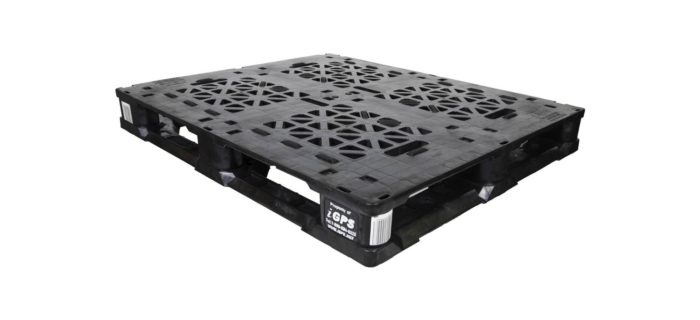Transportation costs are rising–and have been for some time–across all industries. The economy is growing, and as business picks up, more freight has to be carried on the same number of trailers and trains. It’s a cycle that the country has seen many times before. In recent years, however, other factors have also come into play, causing a shortage in the number of available truckers and making it more expensive to hire those who remain. The trucking industry has always experienced relatively high turnover as drivers move from company to company, but this time something different is happening.
The veteran truckers of the 1970s and 1980s—often considered the golden age of trucking—-have reached retirement age. In addition, new regulations limit the number of hours that can be driven, and these regulations are enforced using an electronic logging device (ELD). The combination has limited the appeal of trucking jobs so that retirees are being replaced slowly, if at all. All of these factors suggest a continued truck driver shortage in 2019. As a result, companies will need to be creative to successfully transport their goods while keeping their operating costs and product prices down.
How the Truck Driver Shortage in 2019 Will Affect Costs
 Increased transportation costs have not been confined solely to the trucking industry, and this trend is likely to continue. Confronted by higher trucking prices, companies have been seeking alternative transportation for their products, such as rail. Seeing an opportunity, railroad companies have also raised their rates. CSX exceeded expectations for profits in 2018 due to a combination of cutting capacity and raising rates.
Increased transportation costs have not been confined solely to the trucking industry, and this trend is likely to continue. Confronted by higher trucking prices, companies have been seeking alternative transportation for their products, such as rail. Seeing an opportunity, railroad companies have also raised their rates. CSX exceeded expectations for profits in 2018 due to a combination of cutting capacity and raising rates.
The year 2019 will belong to companies who succeed in protecting their profits while keeping their retail prices competitive and affordable for consumers.
On the trucking side, costs will likely continue to rise as trucking companies offer higher wages and more incentives to better fill their rosters–and as they raise rates to pay for these perks. To increase wages for new drivers, transportation companies have few choices apart from raising rates. Overhead operating costs such as the price of fuel are outside of their control, and while in the U.S. fuel costs are trending downward, they’ve been notably volatile in recent years and don’t represent a cost saving that can be counted on. Even if fuel prices continue to decline, they don’t provide a dependable way to offset rising labor costs.
Bringing transportation in-house is a viable alternative for some businesses whose markets are local or strictly regional. Companies with a national or international reach, on the other hand, may not be able to manage the same feat. Entering the long haul trucking market comes with many challenges, and the cost of running a fleet is likely to exceed the cost of working with existing carriers.
This leaves many companies with little choice but to pay these increasing costs by passing them on to consumers. However, for savvy companies who can keep their prices down, the truck driver shortage and associated higher transportation costs can be an opportunity to expand their customer base. The year 2019 will belong to companies who succeed in protecting their profits while keeping their retail prices competitive and affordable for consumers. The best way to do that is by increasing supply chain efficiency.
Cutting Costs by Improving Supply Chain Efficiency
 The supply chain involves a lot more than just semi-trucks and their drivers. A typical production to retailer channel involves a farm or production facility—likely both—transportation to a warehouse or distribution center (or both), and a final leg of transportation to move products to the retailer. Many of these stages offer opportunities to improve efficiency and offset rising costs.
The supply chain involves a lot more than just semi-trucks and their drivers. A typical production to retailer channel involves a farm or production facility—likely both—transportation to a warehouse or distribution center (or both), and a final leg of transportation to move products to the retailer. Many of these stages offer opportunities to improve efficiency and offset rising costs.
Carefully optimizing your supply chain is the best way of finding the cash to pay for transportation costs, and it isn’t necessarily complicated.
The difficulty is that the supply chain is often more like a “supply web,” and optimizing it across every stage can be a challenge. However, there are some basic best practices that can increase efficiency across every channel and on every leg of the supply chain.
- Data Capture: Inefficiencies can be revealed through the meticulous capture of data over time. It’s possible to optimize processes and pricing by creating a thorough record of transactions in the supply chain.
- Standardized Procedures: Optimal procedures should be standardized across the supply chain so that employees are always familiar with best practices. This ultimately saves time and increases productivity, helping keep the cost-per-process and item low.
- Increased Transparency: Another way to increase productivity is to make collected data more transparent across the supply chain. This allows supervisors to make more informed decisions about the processes they’re using and to optimize standardized processes still further based on circumstances and situation.
Applying these practices to all of a company’s channels can be difficult. Instead, many corporations have chosen to ride out the current truck driver shortage with higher freight costs eating into their profits. Some–including General Mills and Tyson Foods–raised their prices early in 2018 to cover freight costs. Many more will make the same choice in 2019. However, carefully optimizing your supply chain is the best way of finding the cash to pay for transportation costs, and it isn’t necessarily complicated. Switching to an improved shipping platform is a simple choice that has a ripple effect throughout your supply chain.
How Plastic Pallets Help Offset Transportation Costs
 Switching to a different shipping platform isn’t likely to be the first solution that comes to mind when confronting rising transportation costs due to the truck driver shortage. Nevertheless, a shipping platform that brings greater efficiency to a single supply chain channel will bring those efficiencies to all the channels that use it. Using plastic pallets instead of wood pallets improves efficiency by providing several benefits:
Switching to a different shipping platform isn’t likely to be the first solution that comes to mind when confronting rising transportation costs due to the truck driver shortage. Nevertheless, a shipping platform that brings greater efficiency to a single supply chain channel will bring those efficiencies to all the channels that use it. Using plastic pallets instead of wood pallets improves efficiency by providing several benefits:
- Energy Savings: A plastic pallet is lighter than its wood equivalent at less than 50 pounds (compared to nearly 80 pounds for a reusable wood block pallet). Fuel expenditure is a function of both distance and weight, and a lighter pallet increases the average fuel mileage for semi-trucks. Cost savings on fuel for companies using plastic pallets instead of wood have been estimated at $0.75 to $1.08 per pallet load. (For shipments that weigh out, plastic pallets enable more pallet loads per truck).
- Durability: Plastic pallets are far more durable than wood pallets and are capable of many more trips through the supply chain. The result is reduced product damage during transportation and reduced foreign object contamination due to wood fragments. Reducing product damage in manufacturing, transportation, and distribution can save between $0.14 and $0.70 per pallet load.
- Hygiene: Plastic pallets are washable and sanitizable, which helps prevent the spread of microbial and chemical contaminants in the supply chain. A plastic pallet removes a vector for cross-contamination and reduces the likelihood of an expensive recall. Plastic pallets also do away with the need for slip sheets. Depending on the kind of slip sheet and the number typically used per load, savings on slip sheets can range from $0.10 to $0.80 per pallet load.
- Ergonomics: Plastic pallets can be built with design features that wouldn’t be economical in a wood pallet, such as handholds, chamfered edges that help guide forks, and rounded corners that keep pallets from snagging on walls, racks, and employees. These features help reduce damage to products and equipment and make plastic pallets easier to work with than wood ones.
Standardizing the plastic pallet as a shipping platform across your supply chain adds passive efficiency gains to every product channel. Although the savings are small on each individual operation, they add up to benefit your bottom line and can help offset increasing transportation costs.
When enabled, RFID tracking allows logistics operations to automatically capture data about each movement in the supply chain.
As well as providing passive savings, plastic pallets can also actively help you improve your supply chain efficiency through Radio Frequency Identifier (RFID) tracking. When enabled, RFID tracking allows logistics operations to automatically capture data about each movement in the supply chain. This data can reveal areas for improvement and make auditing your processes easy and repeatable. High-quality plastic pallets give you the tools you need to respond to truck driver shortages in 2019 in beyond.
The iGPS pallet pool provides a high-quality plastic rental pallet that actively and passively supports and improves supply chain efficiency. To lower your Total Cost of Business with the iGPS pallet, contact our team at 1-800-884-0225, email a specialist at switch@igps.net, or visit our contact page.



